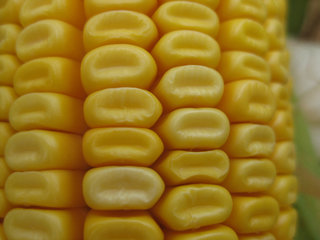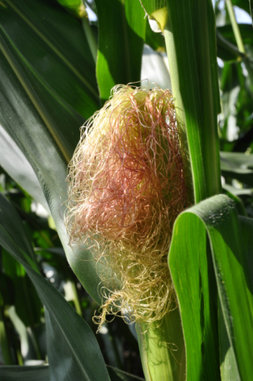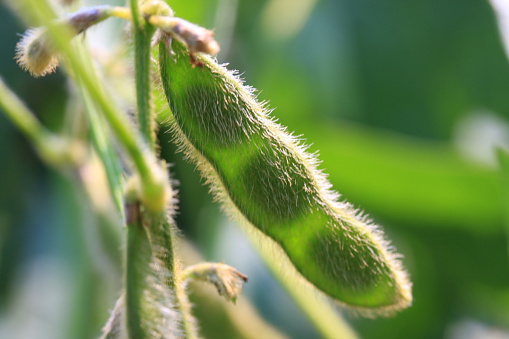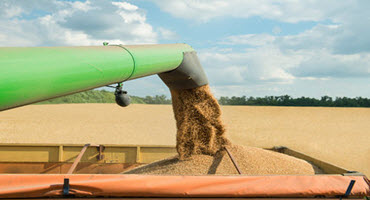North Carolina leads the country in percentage of dented corn
By Diego Flammini
Assistant Editor, North American Content
Farms.com
American corn producers are beginning to see their crop dent, despite the levels being lower than the recorded five-year average.
The United States Department of Agriculture (USDA) reported that 7 percent of the total U.S. corn crop is dented in its latest Weekly Weather and Crop Bulletin.

That number is down from the five-year average of 11 percent.
On a state level, the corn crop in North Carolina is 69 percent dented, which is the highest of the 18 states documented.
Colorado, Michigan, Minnesota, North Dakota, Pennsylvania and Wisconsin have no corn dented as of the August 8 report.
And 42 percent of the U.S. corn crop is in the dough stage, according to the USDA.
That number is down slightly from the 44 percent measured over five years.
Of the 18 recorded states, North Carolina, has the highest amount of corn in the dough stage, at 92 percent.
On the other side of the scale, Colorado has 7 percent of corn in the dough stage, which is the lowest in the country.
And 93 percent of the total American corn crop is silking, USDA reported.

That number is only down 1 percent from the five-year average.
Missouri is the only state with 100 percent of its corn silking, according to the report.
Corn in Wisconsin, with 80 percent of the crop silking, is the lowest of the 18 states documented.
USDA reported 13 percent of the corn as excellent and 47 percent as good, which is on par with last week’s report.
Soybeans
90 percent of the U.S. soybean crop is blooming, according to the USDA’s report. That number is up from the five-year average of 88 percent.
100 percent of the soybean crop in Louisiana has bloomed, the USDA said.
71 percent of the soybean crop in Kentucky has bloomed, which is the lowest of the 18 states recorded.
And 65 percent of the total U.S. soybean crop is setting pods, the USDA said.

That figure is up from the five-year average of 62 percent.
The soybean crop in Louisiana also leads the country in percentage of the crop setting pods, at 97 percent.
The states with the lowest percentage of its crop setting pods are North Carolina and Kentucky, both sitting at 50 percent.
The USDA reported 10 percent of the total soybean crop as excellent and 50 percent as good, which is consistent with last week’s numbers.
Wheat
Farmers have harvested 94 percent of the total U.S. winter wheat crop, the USDA reports. That figure is up from the five-year average of 92 percent.
USDA reported 10 out of 18 states have 100 percent of their winter wheat crop harvested.
The state with the lowest percentage of its winter wheat harvest completed is Idaho with 52 percent.

American farmers have also harvested 24 percent of the country’s spring wheat crop, according to the USDA. That number is up 3 percent from the five-year average.
Producers in South Dakota have harvested the highest percentage of their winter wheat at 65 percent.
While farmers in Minnesota, at 9 percent, have harvested the lowest percentage of their winter wheat of the six states documented.
USDA rated 7 percent of the winter wheat crop as excellent and 25 percent of the crop as good.
Fieldwork Days
The states with the highest number of days suitable fieldwork for the week ending August 6 were:
California and Nevada – 7
Oregon and Idaho – 6.9
Washington and Arizona – 6.8
Utah and Wyoming – 6.7
And the states with the fewest number of days suitable fieldwork were:
New York – 4.5
Wisconsin – 4.8
Louisiana and Pennsylvania – 5
West Virginia – 5.1
Weekly Precipitation Levels
State | Precipitation (inches) | Weather Station |
Illinois | 1.80 | Chicago/O’Hare |
Indiana | 1.06 | South Bend |
Iowa | 0.47 | Des Moines |
Kentucky | 0.76 | Lexington |
Michigan | 3.39 | Traverse City |
Missouri | 2.18 | Kansas City |
New York | 1.52 | Buffalo |
Ohio | 1.51 | Mansfield |
Pennsylvania | 4.02 | Williamsport |
Tennessee | 1.30 | Nashville |
The next USDA Weekly Weather and Crop Bulletin is scheduled for release on Tuesday, August 15.